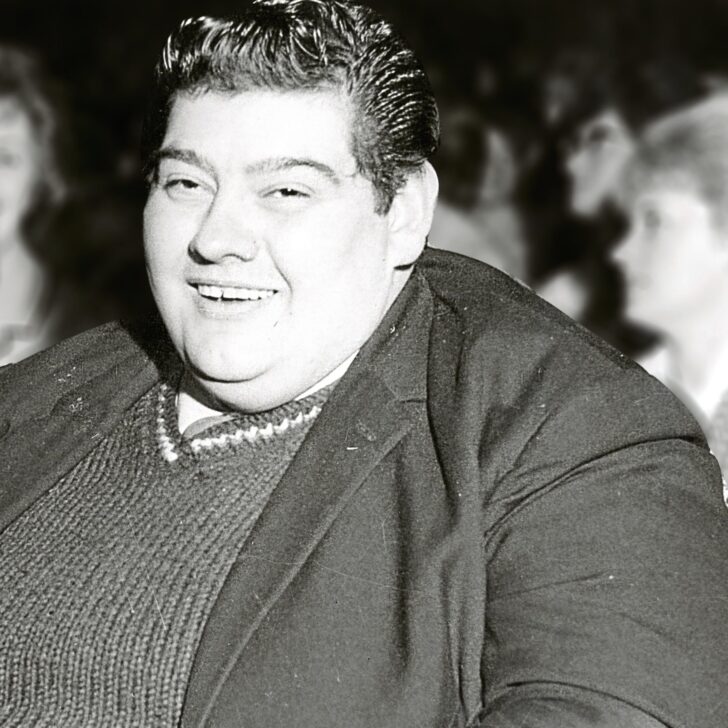Becoming the youngest woman ever to win an Olympic track gold medal was in itself an amazing achievement, especially at a time when few women competed in track events. That’s what US athlete Elizabeth “Betty” Robinson did in 1928.
Then, while training for the 1932 Olympics, she was involved in a devastating air crash. She was found in the wreckage and believed to be dead. Taken to a morgue, staff then noticed that the “corpse” was still showing signs of life, and Betty was rushed to a hospital.
Betty spent seven weeks in a coma, and when she awoke, she was told that her injuries were so severe that she would probably never walk unaided again and would certainly never run again.
After six months in a wheelchair and almost two years walking with sticks, she resumed training, though most people told her that was hopeless. Somehow, she was able to fight back to the point that she was selected for the US track team for the 1936 Olympics.
This is the incredible story of Betty Robinson.


Early Life
Elizabeth Robinson was born in Riverdale, Illinois, in 1911. Known by friends, family, and classmates at Thornton Township High School as Betty, she was popular and athletic.
However, in the 1920s, women’s track and field events were virtually unknown.
One morning, Charles Price, a biology teacher from the high school, was on a train, waiting for it to depart. It began to move, and Price saw Betty running to catch it.
He knew that wasn’t possible and noted that 16-year-old Betty was going to be late for school. A few moments later, he was astonished when Betty entered the carriage and sat beside him.
The fact that she had caught the train showed that she was fast, and Price, a former athlete who was also the school athletic team coach, invited Betty to join the team.
Price timed Betty and confirmed that she was a sprinter of extraordinary ability. She would become the only female member in what was otherwise an all-boy team.
Organised women’s track events were just beginning to be held in America, and he encouraged her to participate.
When she came second in a 100-metre race behind the reigning regional champion, she was invited to join the Illinois Women’s Athletic Club.
The 1928 Olympics
The 1928 Olympic Games were to be held in Amsterdam in the Netherlands and, for the first time, would involve women’s track and field events.
However, women were only permitted to participate in the 100m, 4x100m relay, 800m, discus and high jump events.
Although she had been competing in Illinois for only a few months, Betty was invited to take part in the US Women’s Olympic trials in New Jersey.
She finished second and was invited to become the youngest member of the 1928 US Olympic team.
Incredibly, she became the only US athlete to qualify for the 100m final. After a false start, two competitors were disqualified, and the remaining six lined up for a second time.
This was only the 8th time that Betty had ever run in a 100m race.
Somehow, she won, becoming the first women’s 100m winner, the youngest ever 100m Olympic Gold medal winner (she was still just 16) and the first US Olympic track and field gold medallist.
She went on to win a silver medal in the 4x100m relay and returned to America to be feted for her achievements.
Almost as soon as she returned home, Betty began training for the 1932 Olympics, which were to be held in Los Angeles.
The Air Crash
Betty trained with the track team at Northwestern University, where she also worked towards a physical education degree (she hoped to become a track coach).
By the summer of 1931, she was in peak condition, with many people citing her as a potential winner in the Los Angeles games scheduled for the following year.
However, Betty was also working towards gaining a pilot’s licence, and when her cousin offered to take her up for a flight in his light aircraft from a small field near Chicago, she eagerly agreed.
On June 28th, 1931, the aircraft took off normally, but then its engine suddenly quit, and it plunged down to crash in an area of marshy ground near the field.
The first rescuers on the scene dragged the badly injured pilot from the wreck, and he was taken to hospital (he survived but lost a leg).
His female passenger was believed to be dead, and she was placed in the trunk of a car and taken to a local mortician. In the morgue, staff noticed that she was still breathing, and she was quickly taken to a nearby hospital.

Betty remained in a coma (she wouldn’t regain consciousness for several weeks), and she was found to have internal injuries in addition to a badly broken leg, arm and hip.
Surgeons inserted a metal pin in her leg, but this left it slightly shorter than the other and unable to bend completely at the knee.
When she regained consciousness, Betty was told that she might never be able to walk unaided and that she would certainly never run competitively again.
She spent six months in a wheelchair, and it would be almost two years before she could walk without crutches.
Betty began running again, mainly to speed up her recovery. Gradually, her fitness improved until she began to consider the possibility that she might be strong enough to compete in the 1936 Olympic Games.
However, there was a major problem: she couldn’t bend her damaged leg sufficiently to take position in starting blocks, which ruled her out of most sprint events.
The 1936 Olympics
The 1936 Olympics were held in Germany under the leadership of Adolf Hitler, who planned to use the event as a demonstration of the superiority of its Aryan athletes.
Betty Robinson’s tenacity and determination to overcome her injuries meant she regained her speed but still couldn’t use starting blocks. She was picked to be a member of the US 4x100m team, where she could start from a standing position.
In the heats, the German team were clear favourites, setting a new world and Olympic record time in the semi-final. The US team reached the final, but few gave them a chance against the Germans.
Betty Robinson joined her teammates Harriet Bland, Annette Rogers and Helen Stephens as they lined up for the final.
Betty was running the third leg, and the German women had a narrow lead by the time she took the baton.
Betty was able to close the distance to the leader, but then, stunningly, the German women fumbled the last changeover and dropped the baton.
Betty made a flawless handover to Helen Stephens, and the US team won. At the age of 24, Betty Robinson won her second Olympic Gold medal.

Later Life
After the 1936 Olympics, Betty Robinson retired from competitive athletics, though she still served as a referee and timekeeper at important events.
She also became a popular lecturer, touring America, giving talks in support of the US Olympic organisation and promoting the involvement of women in Olympic events and other sports.
In 1939, she married and moved to a small home outside Chicago, where she had two children, a boy and a girl. In 1974,
Betty was inducted into the National Track and Field Hall of Fame in New York City, though strangely, she was never given a place in the US Olympic & Paralympic Hall of Fame.
In 1996, at the age of 84, she proudly carried the Olympic Torch for the games held in Atlanta, Georgia. Betty Robinson passed away peacefully in Colorado on May 17th, 1999, at the age of 87.
Conclusion
The story of Betty Robinson’sRobinson’s achievements is inspirational on so many levels.
At the age of just 16, when many people objected to women taking part in track and field events, she gained fame as the first women’s 100m Olympic champion, the youngest 100m winner, and the first US Track and Field gold medallist.
In itself, that was an astounding feat for such a young and inexperienced athlete.
After the injuries she received in the 1931 air crash, Betty was told that she would probably never walk unaided again and that she would certainly never again be able to run competitively.
Somehow, she overcame the pain and legacy of her injuries to regain her fitness and speed and win a second Olympic Gold medal in 1936.

Betty Robinson was an extraordinary woman, yet she retained modesty and humility despite the fame that her Olympic medals brought. Sadly, her story has been all but forgotten today.
Ask most people to name a US athlete at the 1936 Olympic Games, and they will most likely mention sprinter Jesse Owens.
Owens’ achievements are certainly incredible, but we should also remember a young woman who overcame adversity to achieve her dream at the same Olympics.
Sources
https://worldathletics.org/heritage/news/betty-robinson-olympic-champion-comic-feature
https://olympics.com/en/athletes/elizabeth-robinson
https://www.bettyrobinson.org/legacy













Leave a comment